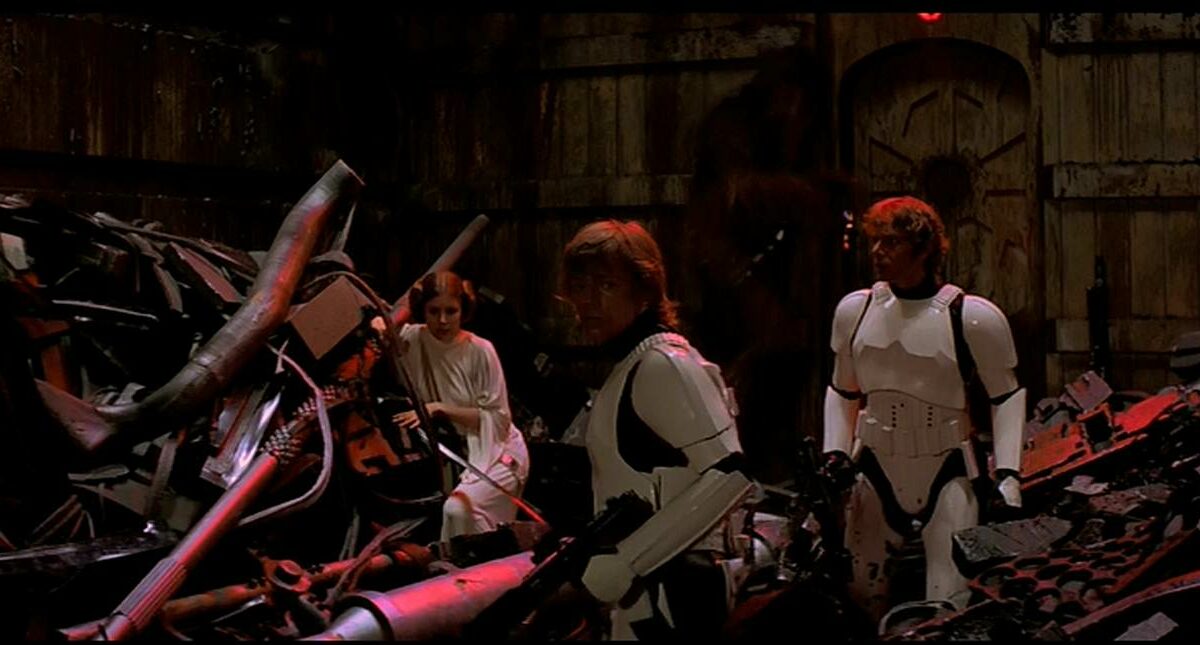“A great story is never fully predictable through foresight – but it’s projectable through hindsight.” – Peter Guber
Late Saturday afternoon in December. Cleveland airport. D Concourse. One hour and ten minutes between flights. Hungry. Thirsty. Tired. One, full-service restaurant. Under staffed and bursting at the seams with harried travelers. A single, recently vacated and unsightly table. The opening scene of another unpredictable marketplace story, and the impetus for this post.
All marketplace experiences, like the one above, are by their nature unique to the individual and inherently unpredictable. Try as you may, you simply can not foretell the future. You can’t stage it for your customers, nor can they orchestrate it for themselves. There are simply too many variables. But you can understand how people construct stories through hindsight; how they organize their thoughts to create memories. And then, you may be able to help them create a story worth remembering, or even one worthy of remark.
The Mind As Producer And Director
We don’t store a continuous, unedited, uncut version of the world around us. The mind doesn’t record each and every detail of our experiences. Rather, it automatically trims life into smaller, more manageable and meaningful scenes. It then edits and stores those scenes, and later retrieves them in a form something like a highlight film or movie trailer; one created by us and from our particular point of view. And that final version of our story, that ultimate experience, is the one that matters to us most of all. Have you ever been engrossed in a movie, when suddenly, the screen goes black? I’m referring to a glitch, not the final episode of The Sopranos. Now, despite the popular notion that the disruption “knocked you out of your suspension of disbelief,” you never really stopped believing that you were in a movie theater watching a movie. What it did was temporarily upset your movie watching experience. The important question is, how did it affect your ultimate experience? The version that you created after the fact and stored in your mind.
There will always be elements of marketplace experiences that we’d rather have edited out; disrupted entertainment, inconvenience, trying to find what we’re looking for, not knowing what we’re looking for, or even,in this Web 2.0 world, paying for services. And indeed, businesses have sprung to life and enhanced their offerings by eliminating those various “scenes” from our marketplace stories; e.g. Samsung’s high-def, plasma TV’s, Commerce One’s extended hours, Campbell’s innovative, soup shelving system, various gift cards, and Zecco.com’s free stock trading platform. Relegating annoying scenes to the cutting room floor is a fully predictable enhancement to a customer’s story. But, like preventing movie projector snafus, it is hardly the formula for creating a great story; one an audience will remember and rave about. That requires tapping into something much deeper and more meaningful. Something that their minds can highlight in their personal movie trailers. Something about themselves, and about their selves’ role in their experiences.
We Create The Stories
Today’s commonly accepted view is that brands tell us their stories with various products, pricing, people, online presence, facilities, communications, et al. That’s a misguided view. In reality, we use our interaction with brands their sceneries, props, set decorations, scripts, and actors, to construct our own stories; ones that we want to tell about ourselves. And since we define ourselves both according to what we identify with and what we reject, and given the abundance of marketplace choice, we now choose interactions which we feel will produce the best story possible. And we reject the others.
As one particular story goes, each morning in the 1950s, noted advertising man David Ogilvy would stroll through New York City’s Central Park on his way to his office. One beautiful April morning, he witnessed a man begging beside a sign which read, “I am blind.” By evidence of the man’s near empty cup, he was not doing very well. So, Ogilvy removed a marker from his briefcase and changed the sign to read, “It is spring and I am blind.” After that small change, the money poured in.
Our simplistic, cause-and-effect way of viewing that story is that Ogilvy changed the message, thus making it more persuasive. In fact, what Ogilvy did was much more subtle and powerful. Ogilvy changed the prop and, by doing so, influenced the scene and the story creation of every passerby. By strategically adding those three simple words,“It is spring” he brought life to the scene, encouraged empathy in the actors, and helped them create a story about themselves as sensitive, caring human beings.
The Ultimate Experience Is A Memory
You see, the ultimate experience is not the one that you want people to have during their interaction with you. It’s the one that they want to have after the fact. It’s ultimately, the one that’s stored between their ears; the one that neither you, nor they can predict through foresight. It’s the one that makes them feel good about themselves, but one that they need help creating. Turn your view around and stop thinking of yourself as a storyteller, and begin embracing your more powerful role as story enabler.
Once you shift to this new way of thinking, you’ll realize that the most important things that you create are memories. Instead of being obsessed with the consistency of your story, you’ll start looking for new ways to create highlights in their story. Instead of focusing on your “what” the logical and precise communication and staging of your experience you’ll focus more on the “how” the frequent introduction of emotional and imperfect human communication and interaction designed to bring their story to life. Shakespeare wrote, “All the world’s a stage, and all the men and women merely players.” That appears to be true, but he also wrote, “Life is as tedious as a twice told-tale.” Prove him wrong! Keep the tale of your brand original and alive.
The Blake Project Can Help: The Strategic Brand Storytelling Workshop
Branding Strategy Insider is a service of The Blake Project: A strategic brand consultancy specializing in Brand Research, Brand Strategy, Brand Licensing and Brand Education




